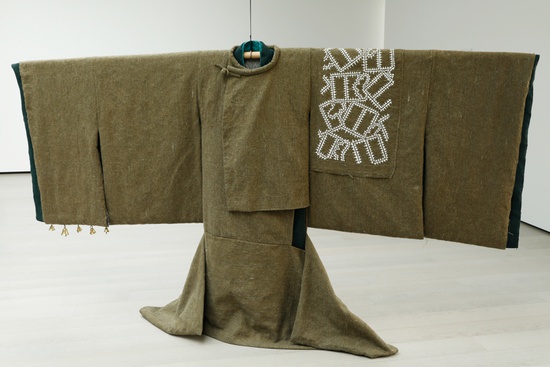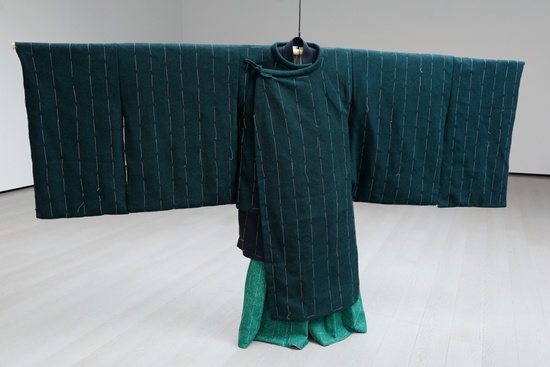Kimonos
Annie Ratti
(2017)
In her practice Annie Ratti often draws from alternative scientific and philosophical traditions. Her work has consistently been underpinned by extensive research as demonstrated by her investigations into the migration of birds for an exhibition at Kunsthaus Bregenz in 2000, her study of Carla Lonzi’s text, Let’s Spit on Hegel, for an exhibition at the historical feminist association, Libreria delle donne di Milano (2018) and an extensive exhibition in Middelburg in 2013 that explored the cultural and ethnographic significance of psilocybin mushrooms.
The legacy of Wilhelm Reich has been of interest to Ratti since she first encountered his writings several decades ago. In recent years this interest in Reich has started to manifest itself in sculptures and installations. In some instances, Ratti reconstructs Reich’s devices, such as the accumulator while in others she examines ideas relating to orgone energy as demonstrated with the kimonos included in this exhibition. An essay that accompanied a recent exhibition by Ratti entitled Anorgorgonia at Amanda Wilkinson Gallery, London, described Ratti’s ‘wearable sculptures’ as functional objects with a protective purpose: Ratti’s work focuses on the everyday experience of the human body. She makes different kinds of habitable structures and spaces; most recently ‘wearable sculptures’ (including hats, kimonos and blankets) that playfully elaborate (and subtly critique) the orgonic principles of the late Wilhelm Reich. These sculptures instantiate a range of unseen procedures for experiencing the self that are at odds with the fast time of digital connectivity. But in a very specific manner, since Ratti’s Reich is somehow proposing us to counter-perform it in the time-space of the exhibition.
The kimonos that feature in this exhibition are similar to the orgone accumulator in that they surround the human body with layers of organic materials. These kimonos also underscore how Ratti balances her rigorous research with an aesthetic flourish; using luxurious texture and lush colour that appeal to the senses.



